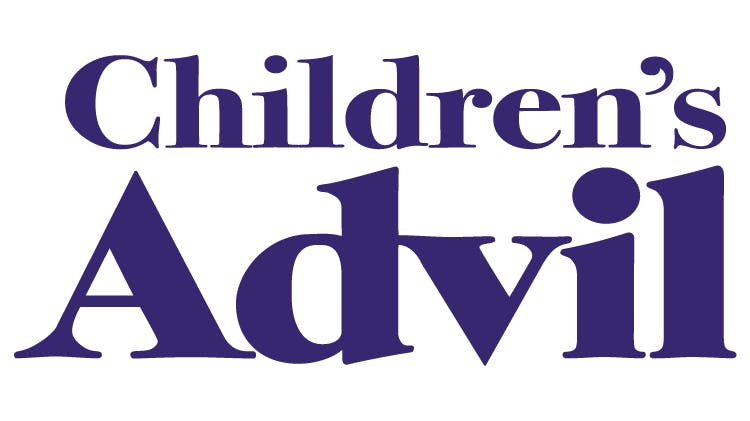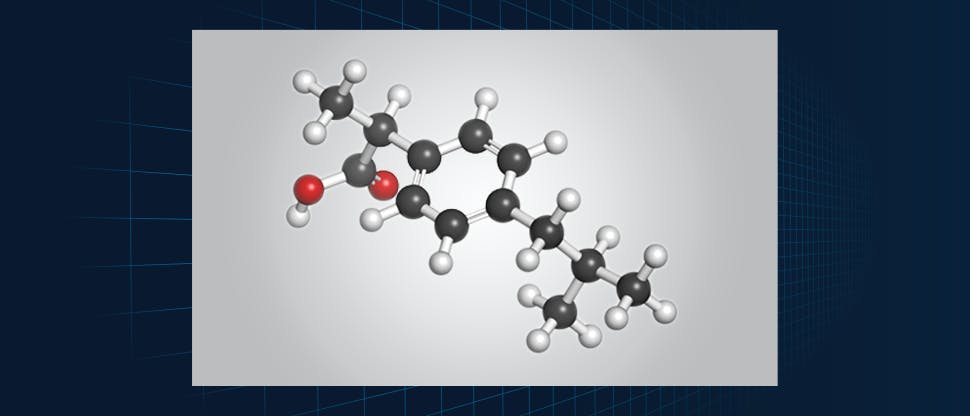Trust Children’s Advil Oral Suspension to act fast and last long in relieving pediatric fever and pain1
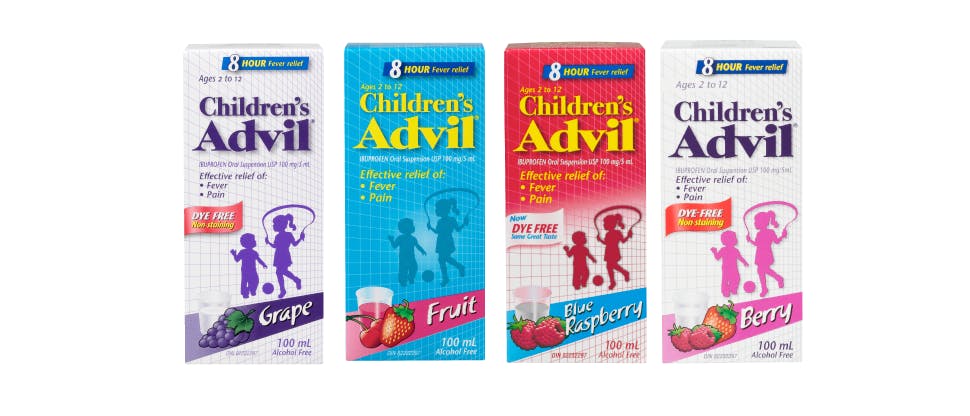
Children’s Advil Oral Suspensions act fast and last long to relieve fever and pain1
With clinically proven safety and efficacy when used as directed, fast acting Children’s Advil and Children’s Advil Fever from Colds or Flu are available in an oral suspension containing 100 mg/5mL ibuprofen. The suspension is designed for children to help manage fever and pain due to colds or flu, sore throat, immunization, and earache.1
Children’s Advil Oral Suspensions are formulated for children 2–12 years old and are available in 5 flavours including blue raspberry, fruit, grape, berry, and bubble gum (with dye-free and sugar-free options in select flavors) to suit your patients' preference and needs.1
Ibuprofen is the non-steroidal anti-inflammatory ingredient in Children’s Advil Oral Suspension products.1
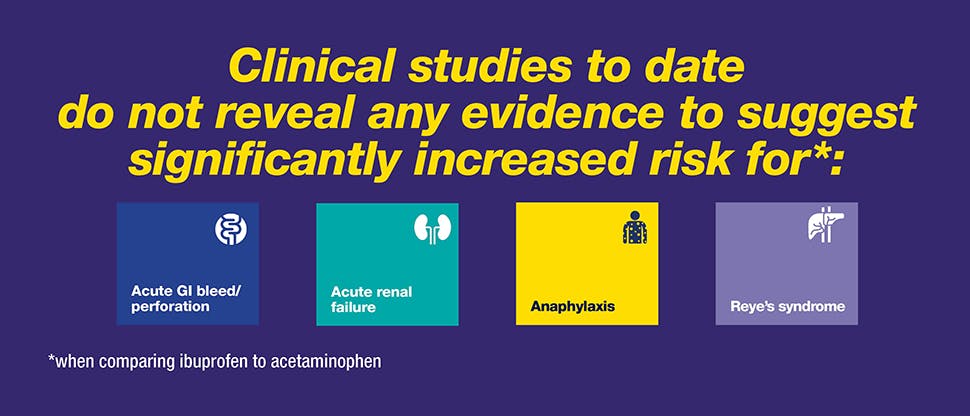
Overall & GI Tolerability Profile in Children
Ibuprofen has a similar safety profile to acetaminophen in children
Ibuprofen has been studied widely in children with over 100,000 enrolled in clinical trials.1-3
Ibuprofen is well tolerated in children at doses of 20–30 mg/kg/day and higher, as demonstrated in the Boston University Fever Study (BUFS). Ideally dosing should be based on weight (see Advil Pediatric Drops product details for dosing chart).1
Studies conducted to date have not demonstrated pediatric-specific problems that would limit the usefulness of ibuprofen in children 4 months and older.1
The safety findings of BUFS are concordant with those of the Children’s Analgesic Medicine Project (CAMP)**:1
Children’s Analgesic Medicine Project (CAMP), 1999 (Ashraf E 1999 et al.)2*
- Within both age groups, <2 years and ≥2 to <12 years of age, the incidence rates for specific adverse effects (AE) for ibuprofen and acetaminophen, including abdominal pain, insomnia, and hyperkinesia were rare and generally <1%
- The absence of serious AEs and rare, non-serious events in children including those <2 years and those ≥2 years of age confirms the safety of ibuprofen
Boston University Fever Study (BUFS), 2003 (Lesko SM et al.)3*
- Among ibuprofen-treated children (n=55,785), the observed risk of GI bleeding, 7.2 per 100,000 (95% CI, 2 to 18 per 100,000), was not significantly different (p=0.31) from the risk among acetaminophen-treated children (n=28,130), 0 per 100,000 (95% CI, 0 to 11 per 100,000)
- There were no hospitalizations for acute renal failure or anaphylaxis; the upper 95% confidence bound for the risk of either of these outcomes was 5.4 per 100,000 ibuprofen-treated children
CI = confidence interval; GI = gastrointestinal.
* Ashraf E et al., 1999 conducted a multicentre, all-comers, open-label, nonrandomized, multiple dose, actual use prospective study comparing the safety of ibuprofen suspension with acetaminophen suspension in children with fever and/or pain. A total of 424 pediatricians enrolled children at 69 US clinics (14,281 were <2 years of age and 15,863 were 2 to <12 years of age). Children aged 1 month to 18 years were studied.
Lesko SM et al., 1995 conducted a randomized, double-blind study that assessed the risk of rare but serious adverse events after the use of ibuprofen suspension in febrile children between 6 months and 12 years of age. The study evaluated a total of 83,915 children enrolled by 1,735 pediatricians, family physicians, and general practitioners in the United States. Children were randomly assigned to receive ibuprofen suspension 5 mg/kg (N=27,948), ibuprofen suspension 10 mg/kg (N=27,837), or acetaminophen suspension 12 mg/kg (N=28,130). Medications were given every 4–6 hours, as needed, for a total of up to 5 doses per day. The study recorded hospitalizations for acute GI bleeding, acute renal failure, and anaphylaxis and monitored for the occurrence of Reye’s syndrome. Four weeks after enrolment, parents were contacted to ascertain the occurrence of serious adverse medical events.

GI bleeding profile in Children
No significant difference in hospitalizations for gastrointestinal (GI) bleeding between ibuprofen and acetaminophen was observed:1
Pediatrics, 1999 (Lesko SM et al.)4*
- The risk of hospitalization with acute GI bleeding among all children <2 years old, regardless of antipyretic assignment, was 11 per 100,000 (95% CI: 2.2–32 per 100,000). Among children randomized to ibuprofen, the risk was 17 per 100,000 (95% CI: 3.5–49 per 100,000)
- This risk did not vary significantly by ibuprofen dose, nor was it significantly greater than the corresponding risk among children randomized to receive acetaminophen (0 per 9,127; 95% CI: 0–33 per 100,000; P=0.6)
CI = confidence interval; GI = gastrointestinal.* A practitioner-based, randomized clinical trial. A total of 27,065 febrile children were randomized to receive acetaminophen (12 mg/kg), ibuprofen (5 mg/kg), or ibuprofen (10 mg/kg). Rates of hospitalization for acute GI bleeding, acute renal failure, anaphylaxis, Reye’s syndrome, asthma, bronchiolitis, and vomiting/gastritis were compared by randomization group. The risk of hospitalization with any diagnosis in the 4 weeks after enrolment was 1.4% (95% CI: 1.3%–1.6%) and did not vary by antipyretic assignment. These data do not provide any information on the safety of these medications when used for prolonged periods or when used together, regardless of duration.
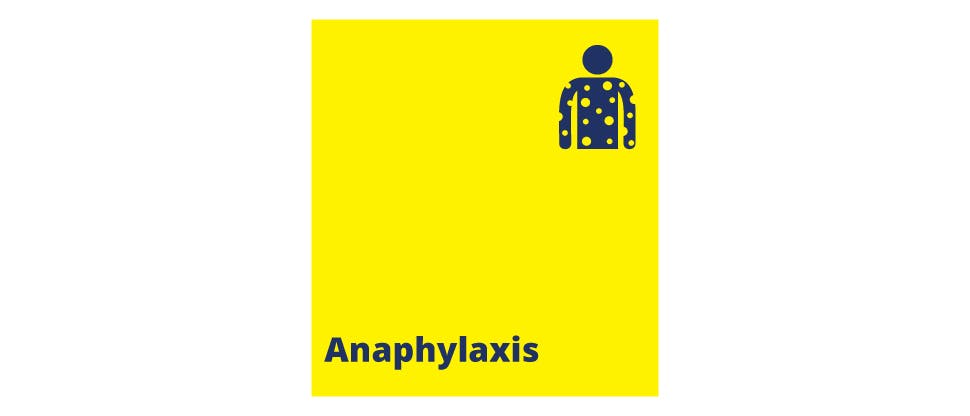
Anaphylaxis profile
Observed risk for anaphylaxis in children treated with ibuprofen:
Boston University Fever Study (BUFS), 2003 (Lesko SM et al.)3*
- Observed risk of anaphylaxis for each among 55,785 children was 0 per 100,000 (95% CI: 0–5.4 per 100,000)
Children’s Analgesic Medicine Project (CAMP), 1999 (Ashraf E et al.)2*
- Amongst the study participants: 14,281 children <2 years old or 15,863 children ≥2 or <12; there were no reported cases of anaphylaxis in the ibuprofen or acetaminophen treatment groups
* Lesko SM et al., 1995 conducted a randomized, double-blind study that assessed the risk of rare but serious adverse events after the use of ibuprofen suspension in febrile children between 6 months and 12 years of age. The study evaluated a total of 83,915 children enrolled by 1735 pediatricians, family physicians, and general practitioners in the United States. Children were randomly assigned to receive ibuprofen suspension 5 mg/kg (N=27,948), ibuprofen suspension 10 mg/kg (N=27,837), or acetaminophen suspension 12 mg/kg (N=28,130). Medications were given every 4 to 6 hours, as needed, for a total of up to five doses per day. The study recorded hospitalizations for acute GI bleeding, acute renal failure, and anaphylaxis and monitored for the occurrence of Reye’s syndrome. Four weeks after enrolment, parents were contacted to ascertain the occurrence of serious adverse medical events.
Ashraf E et al., 1999 conducted a multicentre, all-comers, open-label, nonrandomized, multiple dose, actual use prospective study comparing the safety of ibuprofen suspension with acetaminophen suspension in children with fever and/or pain. A total of 424 pediatricians enrolled children at 69 US clinics; 14,281 were <2 years of age and 15,863 were 2 to <12 years of age. Children aged 1 month to 18 years were studied.
![[Icons of Kidney with copy as stated beside]](https://i-cf65.ch-static.com/content/dam/cf-consumer-healthcare/health-professionals/en_CA/pain-relief/child-advil/Renal%20Safety%20in%20Children_ENGLISH_970x416.jpg?auto=format)
Renal Safety Profile in Children
There was no observable risk of acute renal failure in children treated with ibuprofen:
Boston University Fever Study (BUFS), 2003 (Lesko SM et al.)3*
- Observed risk of acute renal failure for each among 55, 785 children was 0 per 100,000 (95% CI: 0–5.4 per 100,000)
- Renal impairment in adult ibuprofen users occurs primarily among patients with preexisting renal disease or other conditions associated with low intravascular volume or low cardiac output
- It is unclear how this data applies to children and is often not comparable due to the absence of many factors (i.e., tobacco, alcohol, diuretic use, chronic renal failure, and congestive heart failure)
Children’s Analgesic Medicine Project (CAMP), 1999 (Ashraf E et al.)2*
- Amongst the study participants: 14,281 children <2 years old or 15,863 children ≥2 or <12, there were no reported cases of acute renal failure in the ibuprofen or acetaminophen treatment groups
* Lesko SM et al., 1995 conducted a randomized, double-blind study that assessed the risk of rare but serious adverse events after the use of ibuprofen suspension in febrile children between 6 months and 12 years of age. The study evaluated a total of 83,915 children enrolled by 1735 pediatricians, family physicians, and general practitioners in the United States. Children were randomly assigned to receive ibuprofen suspension 5 mg/kg (N=27,948), ibuprofen suspension 10 mg/kg (N=27,837), or acetaminophen suspension 12 mg/kg (N=28,130). Medications were given every 4 to 6 hours, as needed, for a total of up to five doses per day. The study recorded hospitalizations for acute GI bleeding, acute renal failure, and anaphylaxis and monitored for the occurrence of Reye’s syndrome. Four weeks after enrolment, parents were contacted to ascertain the occurrence of serious adverse medical events.
Ashraf E et al., 1999 conducted a multicentre, all-comers, open-label, nonrandomized, multiple dose, actual use prospective study comparing the safety of ibuprofen suspension with acetaminophen suspension in children with fever and/or pain. A total of 424 pediatricians enrolled children at 69 US clinics; 14,281 were <2 years of age and 15,863 were 2 to <12 years of age. Children aged 1 month to 18 years were studied.

Clinically proven efficacy for acute pain and fever in children1
Multiple studies using a dose range from 5–10 mg/kg of ibuprofen has been shown to lower fever in children, including fever due to colds and flu.1 Many studies have been conducted evaluating the efficacy of ibuprofen in managing mild to moderate pain arising from:1
- Sore throat pain
- Otitis media
- Immunization
- Post surgery
Ibuprofen for children provides up to 8 hours of fever relief, which results in less frequent dosing vs. acetaminophen (every 4–6 hours).1,5
![[Zara and mom]](https://i-cf65.ch-static.com/content/dam/cf-consumer-healthcare/health-professionals/en_CA/pain-relief/child-advil/Zara_970x416.png?auto=format)
Zara needs safe, fast and effective relief for her earache and fever
Zara is a healthy 3 year old girl who is in daycare 4 days a week. She started complaining about ear pain overnight and when her mom took Zara’s temperature she confirmed a fever. Her mom knows that taking a proactive approach to managing these symptoms will help Zara feel better and get back to normal. She asks the pharmacist for a solution that would work fast, last long, and about flavour options to make it easier for Zara to take the product.*
Her symptoms: Earache and fever.
Children’s Advil and Children’s Advil For Fever from Cold or Flu are oral suspensions designed to act fast and last up to 8 hours to relieve fever and pain in children 2–12 years of age. There are many convenient flavour and dye free options to choose from. The dosing is flexible and based on age or weight.1
* Fictional case study.
Recommend Children’s Advil to manage your pediatric patients’ acute pain and fever
_English_750x421.png?auto=format)
Children’s Advil Oral Suspensions
Children’s Advil Oral Suspensions act fast and last long to relieve fever and pain1
Children’s Advil — helping parents relieve children's fever and pain
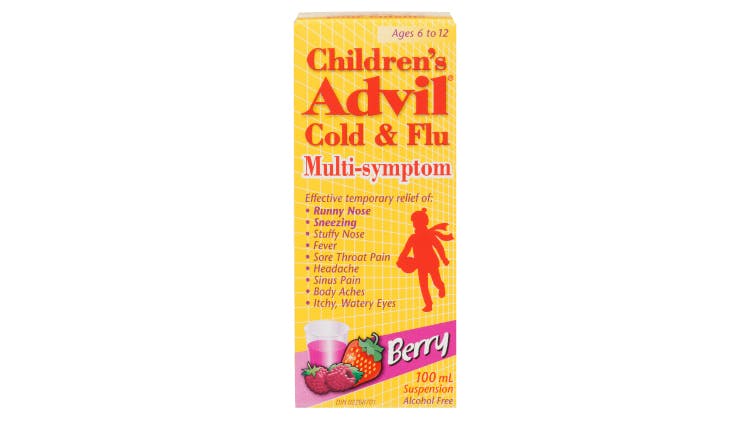
Children’s Advil Cold & Flu Multi-Symptom
Access information about the Children’s Advil Cold & Flu Multi-Symptom products.

Advil — for all your patients’ acute pain relief needs
Learn more about the Advil product family range.
